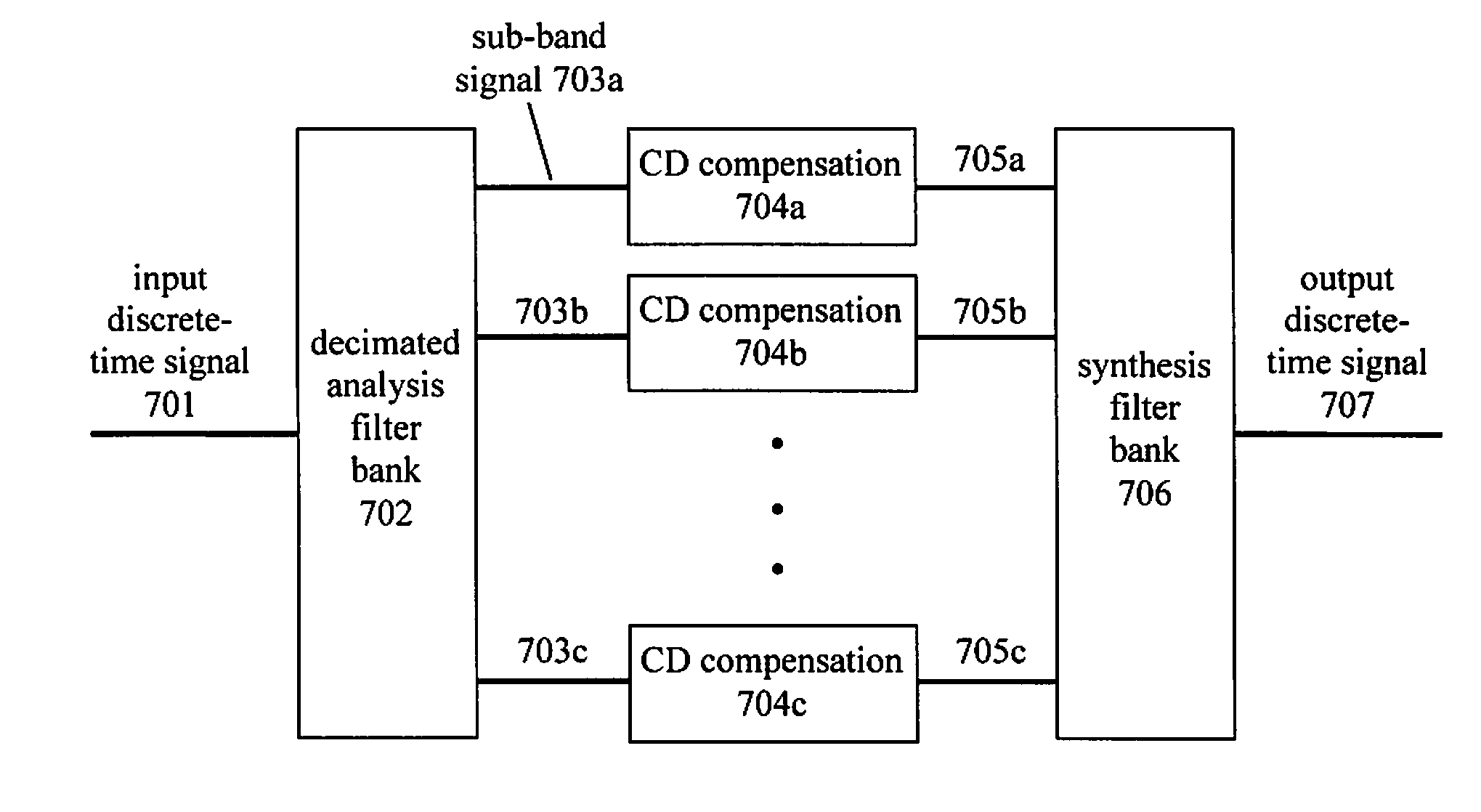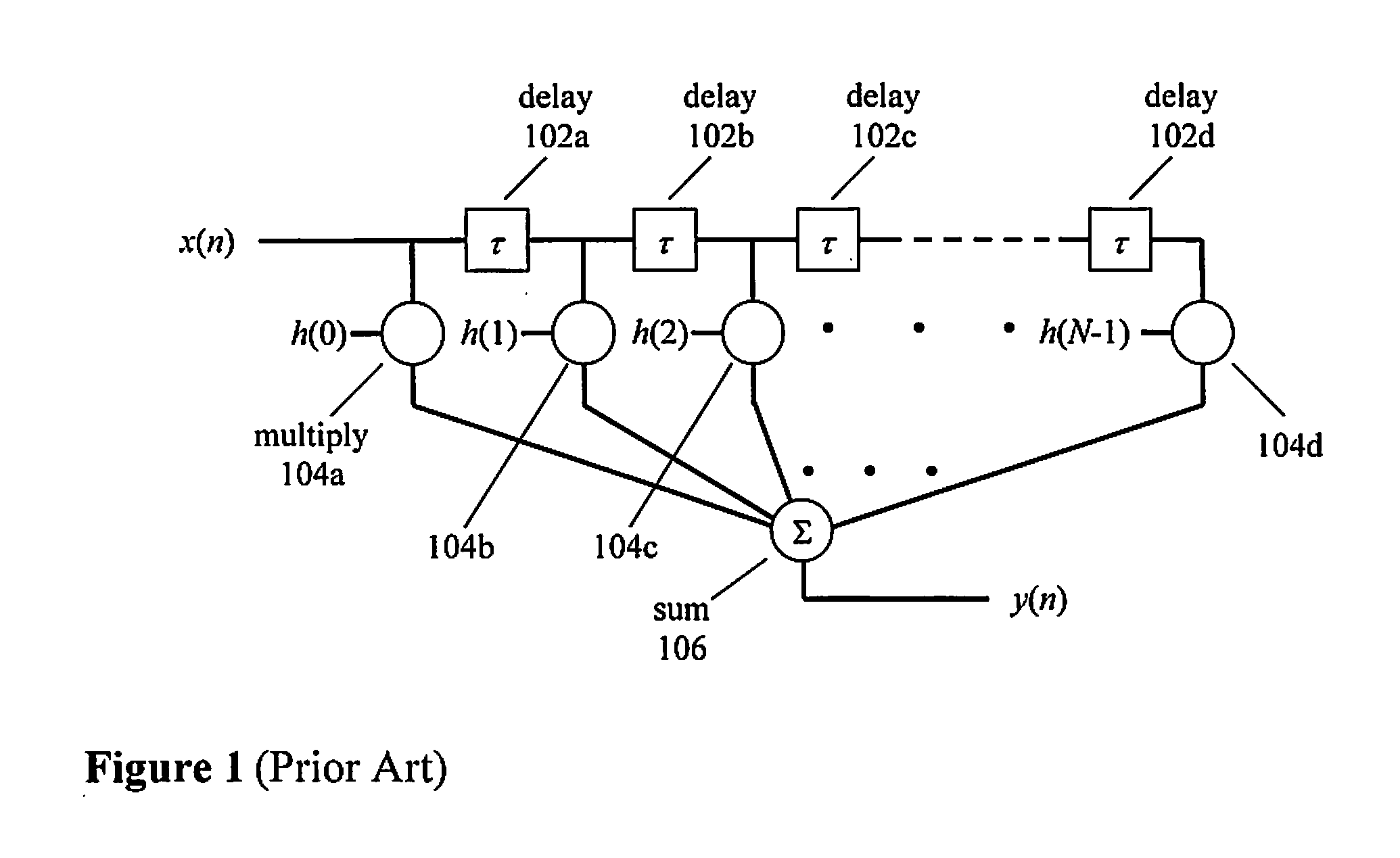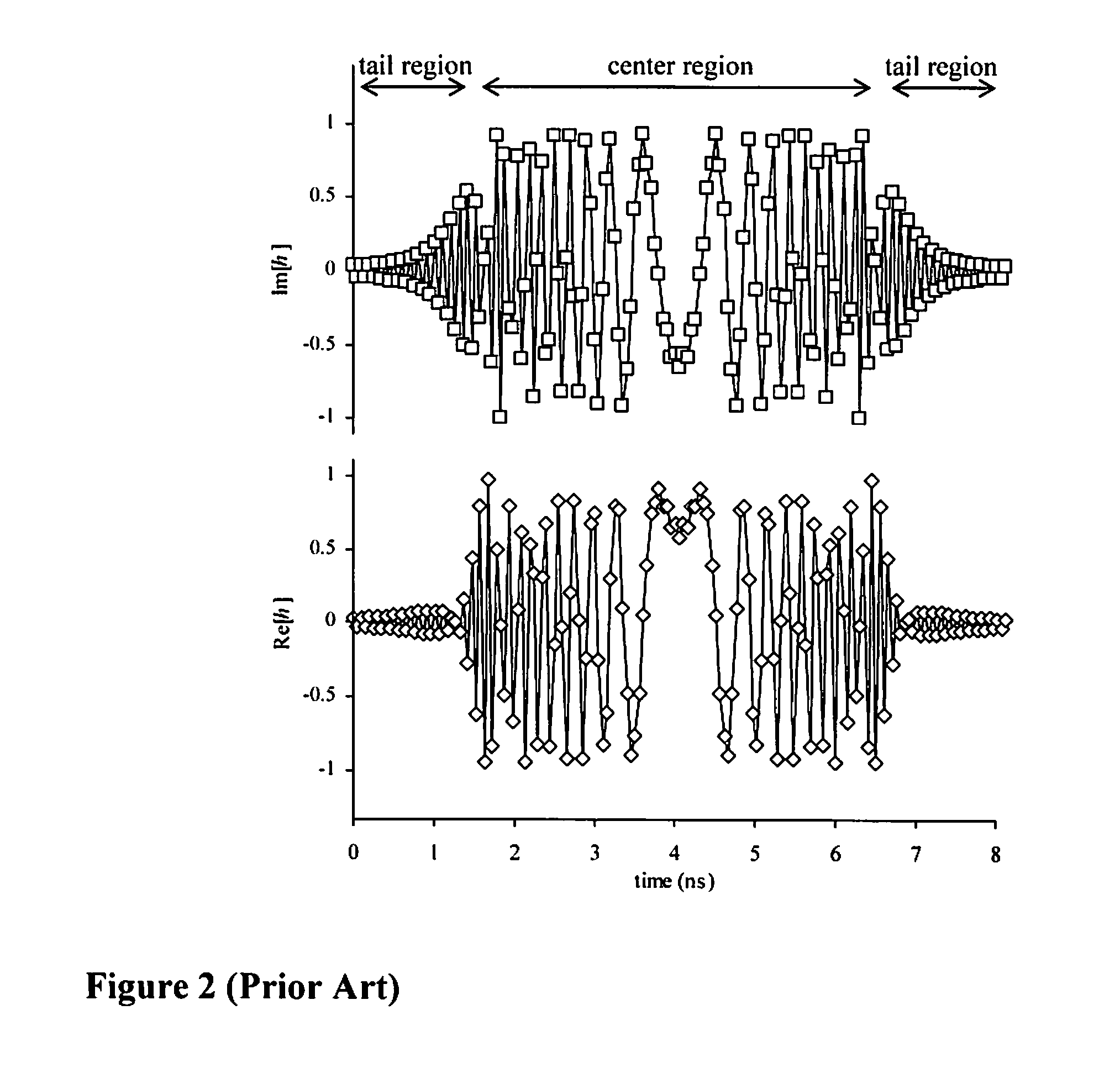Apparatus and method of compensating for compact digital domain chromatic dispersion
a technology of chromatic dispersion and apparatus, applied in the field of optical communication, can solve the problems of physical large size, loss of information in the phase of optical signal, and not yet in widespread use, so as to reduce the amount of computation, reduce the number of computations, and save computation resources
- Summary
- Abstract
- Description
- Claims
- Application Information
AI Technical Summary
Benefits of technology
Problems solved by technology
Method used
Image
Examples
Embodiment Construction
A. Circular Coefficient Approximation
[0035]FIG. 3A is a plot on the complex plane of the tap weight coefficients of FIG. 2, the example of a 10 Gbaud signal over 2000 km NDSF. Each point is a plot of the imaginary part of the coefficient versus the real part. The key feature of FIG. 3A is that most of the points lie close to a circle on the complex plane. Only the tails of the tap weight coefficients, as marked on FIG. 2 and FIG. 3A, deviate significantly from the circle. This circular nature is common to all sets of tap weight coefficients that are designed to compensate for chromatic dispersion. The standard approach to digitization of the tap weights is to digitize the real and imaginary parts independently, to a certain number of binary digits. This is equivalent to moving each point to the closest of a grid of allowed values. The square crosses in FIG. 3B are the allowed digitized values when the complex parts of the coefficients are digitized to 4 binary digits. This is an ine...
PUM
 Login to View More
Login to View More Abstract
Description
Claims
Application Information
 Login to View More
Login to View More - R&D
- Intellectual Property
- Life Sciences
- Materials
- Tech Scout
- Unparalleled Data Quality
- Higher Quality Content
- 60% Fewer Hallucinations
Browse by: Latest US Patents, China's latest patents, Technical Efficacy Thesaurus, Application Domain, Technology Topic, Popular Technical Reports.
© 2025 PatSnap. All rights reserved.Legal|Privacy policy|Modern Slavery Act Transparency Statement|Sitemap|About US| Contact US: help@patsnap.com



